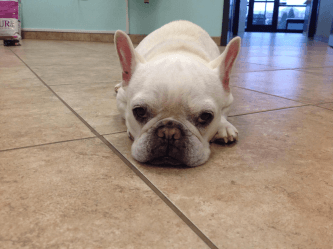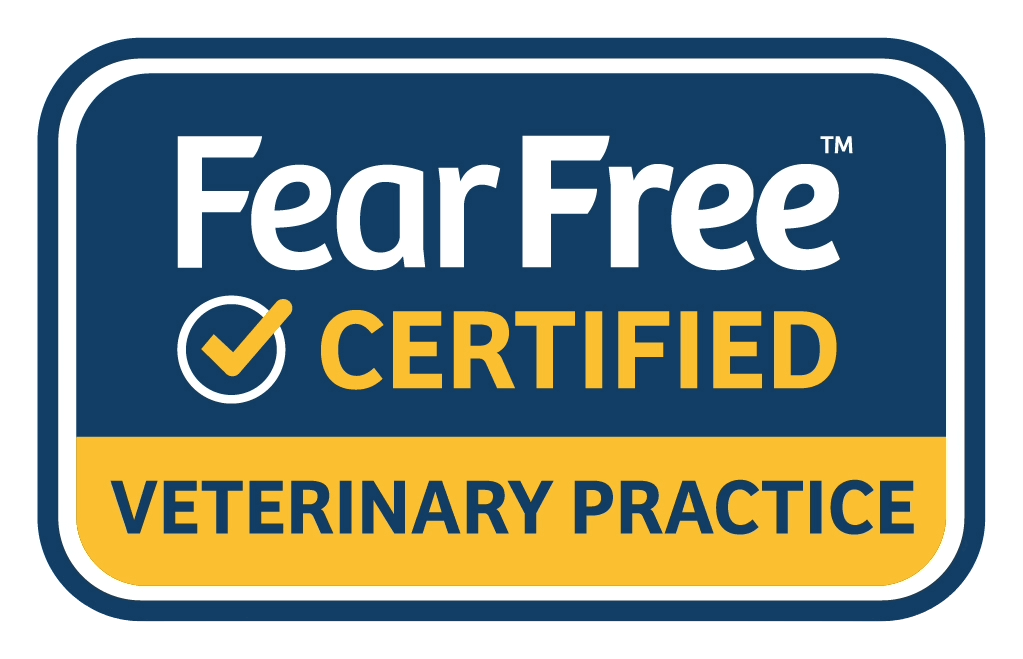A Veterinarian's Perspective on the Diseases Fleas and Ticks Cause, Myths on the control, and New Products to Prevent them
For pet owners in Middle Tennessee it is easy to become lax on flea and tick prevention over time. However, fleas and ticks are in full force this time of year. As a veterinarian, we often talk about them but pet owners often are not aware of all the problems they truly cause.
Fleas are the number one cause of itchiness in dogs and cats. Routinely, a pet owner will present a pet for itchiness and exclaim that they can not find a flea or even refuse to admit that a flea may be the cause. Many do not understand how fleas affect their pet; and, they also believe that because they have administered a preventative product, fleas can't get to their pet at all. What we would like pet owners to understand is that most preventative products do kill the flea, but it takes some time. A bite may have occurred prior to the flea dying but the pet is reacting to the saliva in the bite and getting itchy. Fleas are not only one of the primary source of itchiness for pets, but they also cause tapeworms, some blood-borne diseases, anemias, and "hot spots".
 Now, ticks are a whole other gross bug that really get our pets and clients bothered. The U.S. Center for Disease Control (CDC) reports that ticks in every U.S. state carry diseases, and the number of tick-borne diseases is increasing. We often first see ticks in the spring and they continue throughout the summer and fall. It typically takes less than 48 hours for a tick to transmit disease to your pet. The veterinary team is extremely familiar with the wide range of diseases that ticks transmit; however, most pet parents are not aware of the severity of some of these diseases and they can be potentially fatal. The most common in middle TN for dogs are Ehrlichia and Rocky Mountain Spotted Fever, for cats it is Cytauxzoonosis. For most pets, tick-borne diseases can be elusive and difficult to diagnosis but the most common symptoms are lethargy, fever, decreased appetite, joint and muscle achiness, limping, and inflammation at the attachment site.
Now, ticks are a whole other gross bug that really get our pets and clients bothered. The U.S. Center for Disease Control (CDC) reports that ticks in every U.S. state carry diseases, and the number of tick-borne diseases is increasing. We often first see ticks in the spring and they continue throughout the summer and fall. It typically takes less than 48 hours for a tick to transmit disease to your pet. The veterinary team is extremely familiar with the wide range of diseases that ticks transmit; however, most pet parents are not aware of the severity of some of these diseases and they can be potentially fatal. The most common in middle TN for dogs are Ehrlichia and Rocky Mountain Spotted Fever, for cats it is Cytauxzoonosis. For most pets, tick-borne diseases can be elusive and difficult to diagnosis but the most common symptoms are lethargy, fever, decreased appetite, joint and muscle achiness, limping, and inflammation at the attachment site.
What are some of the myths about fleas and ticks?
Myth #1: The best way to remove a tick is with a lit match, fingernail polish, soak them in alcohol or petroleum jelly. Fact: None of these methods cause the tick to "back out" and all of them may result in the tick depositing more disease carrying saliva into the wound, increasing the risk of the infection. It can also cause damage or irritation to your pet's skin. The best way to remove a tick is by grasping it as close to the skin as possible with tweezers and pull the tick's body out with a steady motion. Dispose the tick by flushing it down the toilet, clean the skin with soap and water, and wash your hands.
Myth #2: Ticks only live in wooded or tree lined areas. Fact: Ticks live on the ground no matter where you live, be it urban or rural. They can come into the house in firewood or on rodents. Outside they crawl up from grass blades onto your pet.
Myth #3: I've never seen a flea on my pet so she doesn't need flea prevention. Fact: This is flea denial, just because fleas are not seen on a pet, does not mean they are not present on them or in their environment. Veterinarians routinely find fleas or flea feces (sometimes referred to as "flea dirt") on itchy pets.
Myth #4: Flea products are toxic. Fact: Some over-the-counter flea preventative products can be potentially toxic to your pet- most are regulated by the EPA and do not have great effectiveness against fleas and ticks and have a narrow margin of safety. Prescription flea products have been extensively tested and approved by the FDA. They work better and are safer for your pet.
Myth #5: Fleas are getting resistant to some flea preventative products. Fact: The reality here is that some pet owners are noticing decreased effectiveness to some favorite products over the years. However, you should ensure that you are administering the product exactly as recommended. Preventatives should be applied in the correct durations, often every 30 days. Make sure that your pet doesn't have a bath or go swimming two days before or two days after application. Lastly, all pets in the house need to be consistently treated with the recommended preventions to avoid them giving these nasty bugs back and forth to one another- this includes all cats, dogs, rabbits, and ferrets.

Myth #6: Once I treat my pet and the fleas go away, my work is done. Fact: One of the biggest mistakes that pet owner make is stopping preventative too soon. Flea have natural life cycle that can take up to 3 months to break. Once the fleas are off your pet, more are waiting to jump on them and there are eggs in the environment waiting to hatch. Year-round preventative establishes a habit that helps ensure compliance and provided ultimate protection.
Prevention is always best but how do you decide which is best for your pet.
Many flea and tick preventatives have been around for several years and are still recommended. Some of those include K9 Advantix II and Frontline Plus and some newer generation of Frontline called TriTak and Certifect. Some newer topical preventatives include Activyl and Parastar Plus, and EasySpot for cats. Some pet owners are hearing about some new products just introduced in the past 12 to 18 months. For cats and dogs, their is a new collar that is safe, effective, and does not stink or have residue called Seresto Collar.
Seresto®, the performance you expect from a topical in an easy-to-use collar with sustained release technology that offers 8 months of continuous protection against fleas and ticks.
Nexgard, from the makers of Frontline Plus, now comes the first flea and tick killer in a beef-flavored chew. Available only through veterinarians.
Veterinarians carry safe flea and tick preventatives that we can apply to your pet for you and educate you on the best preventatives for the life style of your pet. Veterinarians also can offer free dosages or discounts that other pharmacy's can not offer. Mention this article at the Blue Oasis Pet Hospital in Providence and receive 20% any of our in stock flea and tick products or visit our new on line pharmacy for a comprehensive selection. Our online pharmacy can be found on our website at www.blueoasispethospital.com
Some other great websites to check out are www.capcvet.org, dogsandticks.com and PetHealthNetwork.com


